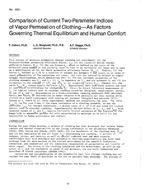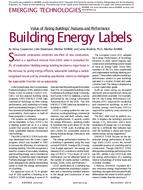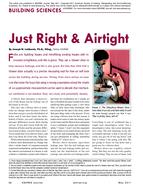Click here to purchase
Digital technologies are ubiquitous, but how digital transformation is applied to derive benefits for the built environment requires a critical assessment and execution. It is the need of the times to leverage technologies for buildings to improve IAQ, life-cycle efficiency and to become a flagship amongst integrated smart organized cities. The Challenge in regional economies lies in selecting the appropriate mix of technologies that can be reliably sustained and embraced by the community and workers without creating frustration and digital divide. If regional economies limit to technologies that are too simple, they can miss the opportunities, while overly complex technologies can be unnerving, chaotic and detrimental. In current environment of sharing and socialnetworking, collaboration and information exchange with other buildings, cities and other sectors can strengthen development of a good strategy and execution program.Digital Transformation & IoT facilitate cost-effective data gathering and analytics to deliver a comprehensive insight and management strategies for any sector. As digitization continues its advance to different building systems and dimensions of the built environment, the analysis of data gathered from equipment operations and occupant behaviors coupled with weather and utilities grid conditions helps save money, minimize costly interruptions , and maximize the occupant experience. A high performance building is founded on harmony of environment with human nature and integrates sensors, controls, measurements and automation to target optimization of how space is used, how equipment is operated, and how behavior modification is directed based on insights garnered through software analytics. Use of alternate energy, water, sewerage, lighting and HVAC systems along with testing, balancing, commissioning and benchmarking complements the operations.This paper first addresses the elements required for transformation to best in class operations to sustain high life-cycle performance, with varying occupancy and space configurations. How well trained and motivated facilities leaders and operating and maintenance personnel can, if provided with adequately hardened infrastructure and a better toolkit can deliver measureable improvements. Energy use tracking and analytics can guide the operations and maintenance staff in performing their responsibilities and facilitate continuous commissioning. Regional skills development program specific to safe, and efficient operations of buildings needs to be developed and offered to the management and staff. For deeper energy cuts, facilities managers and IT system administrators need to collaborate to be able to dynamically manage the building operating parameters based on occupancy, time of day, and other human, environmental, and business considerations.
Citation: 3rd Intl Conf: Efficient Bldg Design
Product Details
- Published:
- 2018
- Number of Pages:
- 9
- Units of Measure:
- Dual
- File Size:
- 1 file , 1.7 MB
- Product Code(s):
- D-ICEB18-C022


